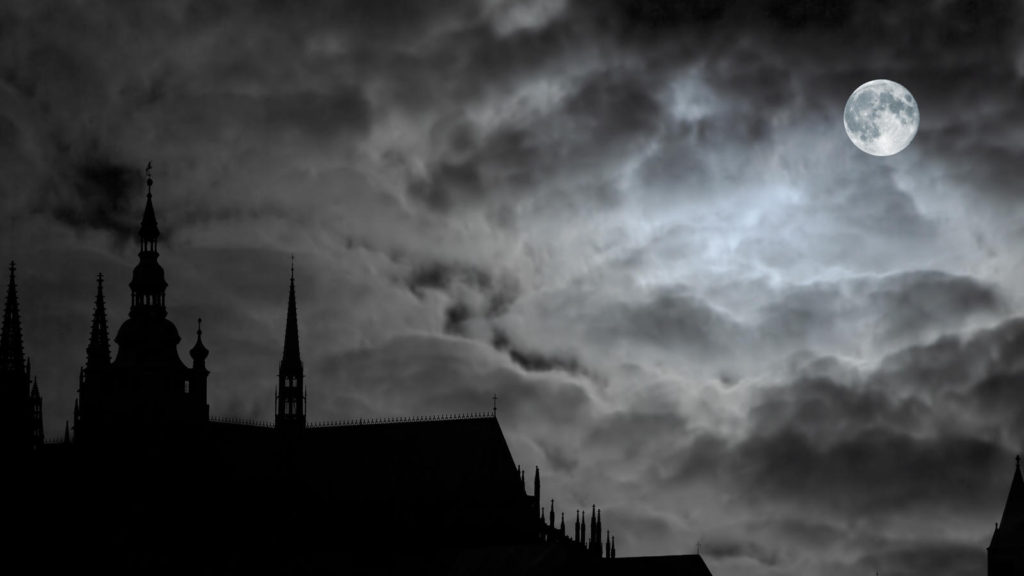
Subscribe on your favorite podcast catcher:
Apple Podcasts | Android | CastBox | Google Podcasts | PocketCasts | PodBean | Stitcher | RadioPublic | TuneIn | Blubrry | RSS
The mythology of the vampire dates back millennia.
As early as 4,000 BC, the Sumerians and Babylonians had stories about those who’d not been buried properly returning to suck life out of the living. Ancient Mesopotamians had stories of the Lamastu, a female demon who appeared at night to steal or kill babies, and sucked the blood from adults.
In 2018, archaeologists found the remains of a 10-year-old child buried in a 4th Century Roman cemetery in Umbria, Italy that had been buried with a stone the size of an egg inserted — and then cemented — into its mouth to prevent it rising from the dead and harming the living. Locals call it the “Vampire of Lugnano.”
Nothing has survived that tells us anything about these burials. We don’t know who these people were and we can only guess at why they’d died.
But, in the 16th and 17th centuries, in the mountains of southeastern Europe, these sorts of legends — stories of the dead who’d come back to harm and kill the living — started having names attached.
These stories — and the legends and beliefs that fed them — would become the folklore for the creatures that we know as Vampires today.
In this episode, we begin our exploration of “real vampires” with the stories of three of these men — Giure Grando, Petar Blagojevic, and Arnod Paole — and, when possible, those that became their victims.
This is no romancer’s dream. It is a succinct account of a superstition, which to this day survives in the east of Europe where little more than a century ago it was frightfully prevalent. At that period, Vampyrism spread like a pestilence through Servia and Wallachia, causing numerous deaths, and disturbing all the land with fear of the mysterious visitation, against which no one felt himself secure.
Dr. Herbert Mayo, in “Letters on the truths contained in popular superstitions” (1849)

Suggested Reading
- Valvasor on Vampires from Shroudeater.com
- A letter from the Gradisker District by Austrian physician Frombold, sent to the Emperor of Kisolova in 1725.
- Visum et repertum by Johann Flückinger, written in 1732. (A translation of the original document at VampGirl.com, and retrieved via Archive.org)
- Treatise on the Apparitions of Spirits and on Vampires or Revenants of Hungary, Moravia, et. al. at Wikipedia
- Visum et repertum by Niels K. Petersen on Magia Posthuma
- Archaeologists find ‘vampire burial’ site of a child feared capable of rising from the dead from the Washington Post
- Vampires: Fact, Fiction and Folklore by Benjamin Radford at LiveScience.com


